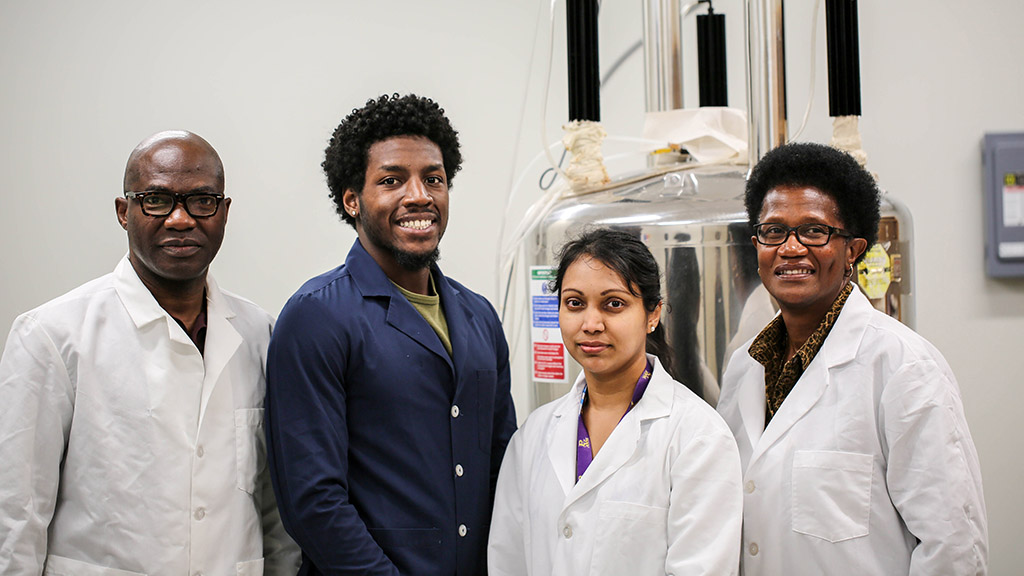October 29 – A medical breakthrough is under development on the campus of Prairie View A&M University. PVAMU scientists are collaborating on a project that once completed, will result in a new way to deliver medicine to cancer cells. Doctors Aderemi Oki and Laura Carson from the College of Arts and Sciences Department of Chemistry and the Cooperative Agriculture Research Center, respectively, are leading the project.
A graduate student began investigating potential bone regeneration polymeric materials about six years ago. Since then, more graduate and undergraduate students have been working on the project under the leadership Dr. Carson and Dr. Oki along with Biology Professor, Dr. Gloria Regisford. Over the years, students have studied using biodegradable polymer systems as drug delivery systems in cancer therapies. Nanometer-sized drug delivery systems are good candidates to deliver therapeutic material to cancer cells because of its ability to penetrate the cell membrane surrounding defective cells. The new system was composed of three major components: chitosan, folic acid, and zinc.
Chitosan is a sugar extracted from the outer skeleton of shellfish such as lobster and crab that’s usually accumulated on the ocean floor. In this system, chitosan serves as a vehicle to transport to the drug because it is not toxic to humans. In certain conditions, it is positively charged and is naturally attracted to the negatively charged cell membrane. Due to the presence of other reactive groups, chitosan can be modified to enable the preparation of a drug delivery system with required characteristics.
The other two components of this system play essential roles in support of chitosan. Folic acid targets cancer cells with minimum interaction with healthy cells as specific cancer cells are known to overexpress folic acid receptors. Zinc and its insertion into a non-positively charged copper sulfide are known as effective therapeutic agents in cancer therapy. These materials take in radiation in low energy environments and provide means of destructing the targeted cells, specifically the defective cancer cell. The wavelength of energy is fine-tuned depending on the amount zinc substituted in the Zn-Cu-S system.
The research done so far has established a route to repeat the making of nanoparticles. Next steps for this research is to conduct studies using live cells. While this work is in its infancy stages, typically, research of this magnitude takes decades to develop, complete, and test on laboratory mice models before making it to market.
This work is supported by the USDA National Institute of Food and Agriculture, Evans-Allen 1890 Research Formula Program project under Section 1445.

Dr. Laura Carson
Research Scientist
lecarson@pvamu.edu
(936) 261-5010

